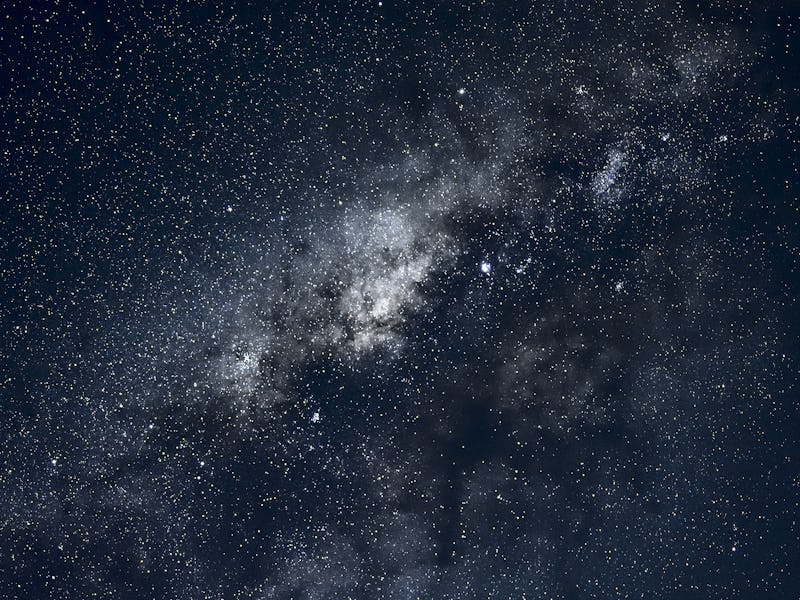Why the Webb Telescope will stare at 3 baby star-making factories to unlock cosmic mysteries
Three strange galaxies are hiding clues about the first stars and dark matter.

Two wonky galaxies and a ball-shaped clump of stars in our Milky Way’s backyard have the distinct privilege of being amongst the first objects that NASA’s newest space telescope will study.
The peculiar star-forming regions Messier 92 (M92), Draco II (Dra II), and Wolf–Lundmark–Melotte (WLM) flaunt atypical shapes. No sweeping spiral arms here:
- M92 is a local globular cluster, where ancient stars gather to form an orb shape about 27,000 light-years from Earth
- Dra II is a tiny, faint galaxy just 65,000 light-years outside the Milky Way
- WLM, an “irregular dwarf” galaxy, is more than 3 million light-years away
Despite their varied distances, they all hold answers to some of the most pressing questions in astronomy today: How do stars different from the Sun evolve? What happens to them when they age? And what can these stars reveal about the nature of dark matter? NASA’s James Webb Space Telescope is days away from officially starting its mission. Once it fully comes online, its NIRCam and NIRISS instruments will peer into M92, Dra II, and WLM to study their evolving stars.
The dwarf galaxy Wolf-Lundmark-Melotte (WLM), viewed by the 268-megapixel OmegaCAM widefield imager and survey telescope at the European Southern Observatory's Paranal Observatory.
To bring the stars into focus — not an easy thing to do when they are located far outside the Milky Way — a team led by University of California astronomer Daniel Weisz must try something new.
“In each of these objects, the stars appear to be very close together,” Weisz tells Inverse. “We are writing special software that measures the brightness of each star, even if it is blended very close to its neighbor.”
“An analogy is headlights on a car: if the car is very far away, the headlights appear to be a single light, even though you know there are two,” he adds.
Getting that sought-after crisp view would be a success in and of itself, beyond the other science questions. “M92, Draco II, and WLM all represent different test cases for the software, because they have stars of very different brightnesses and very different spacing from one another,” Weisz says.
Globular cluster Messier 92 (M92). It is one of the brightest globular clusters in the Milky Way.
Why it matters — In November 2017, the Space Telescope Science Institute selected Weisz’s proposal as one of several for the first five months of Webb’s science operations, known as the Early Release Science (ERS) programs.
Weisz says these different, scientifically-valuable star-forming objects provide an efficient use of telescope time.
M92 is a good juxtaposition to Dra II. They are both “a collection of ancient stars,” Weisz says. But the ultra-faint Dra II has dark matter, whereas globular cluster M92 — believed to be one of the oldest in the Universe, according to Weisz — does not. The motions of stars in Dra II that Webb detects will be paired with previous Hubble Space Telescope data to bolster what astronomers know about dark matter, the mysterious substance binding this “chaotic collection of star-forming regions.”
An illustration of NASA’s James Webb Space Telescope.
The dense gas of the dwarf irregular WLM galaxy is ripe with developing stars. These blossoming beacons intrigue astronomers because their environment, like Dra II, contains far less metallicity than the Sun. The stars of the early universe were made of just hydrogen and helium, and once they perished as supernovas, metals formed and could then be part of the next stellar generation. Stars with low metallicity are likely among the oldest in the Universe.
WLM’s “evolved” stars are also fascinating because they are “governed by complicated physics that is not well-understood,” Weisz says. Webb data will help them learn what is happening.
What’s next — When Webb turns on, Weisz’s team will perform “galaxy archaeology.”
They will compare the brightness and temperature of each star to current predictions about stellar physics, all to help them narrow down their age and chemical composition, thus hinting at how the stars form over time.
Webb will premiere its first images next week, on July 12.
This article was originally published on